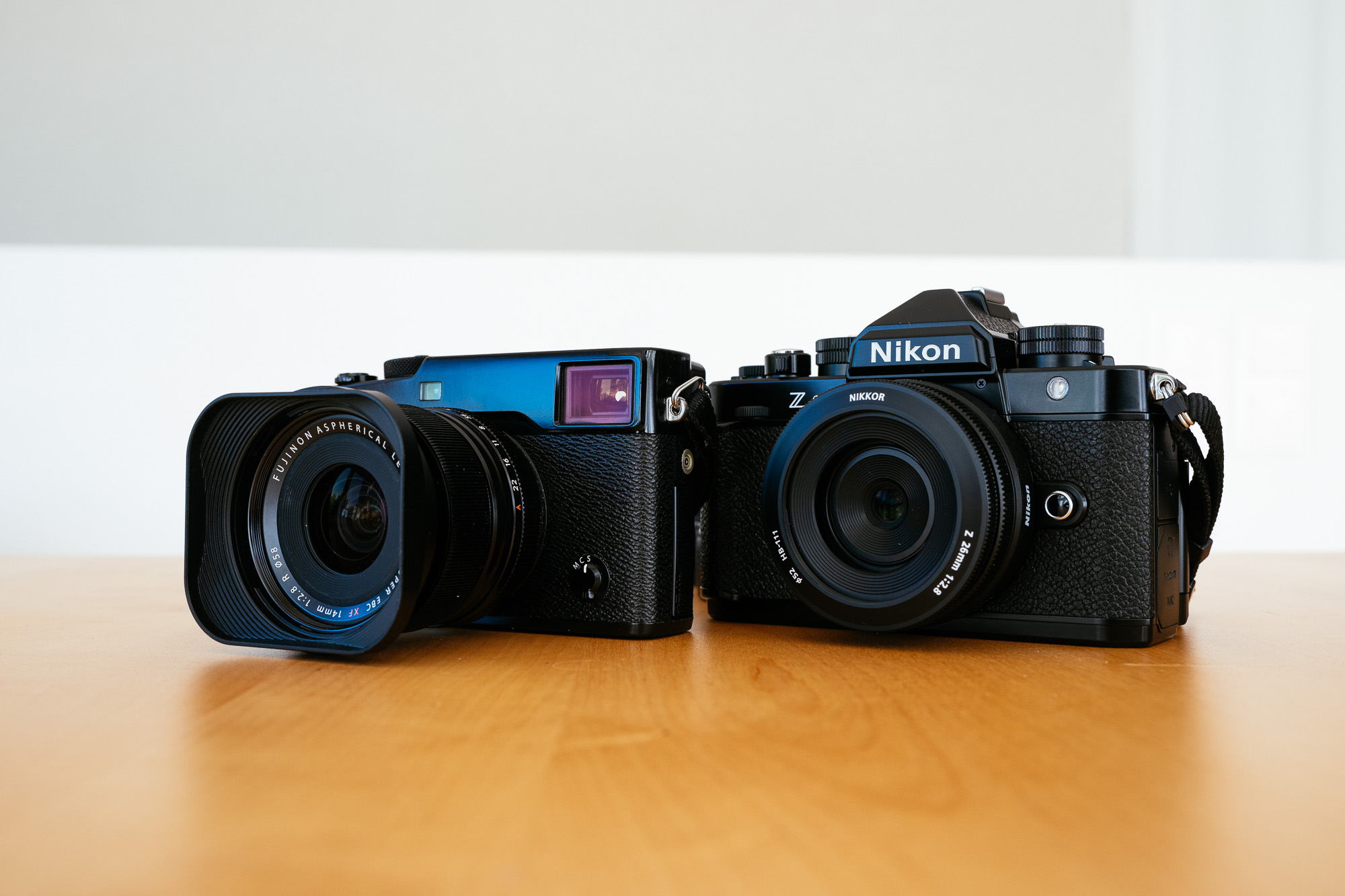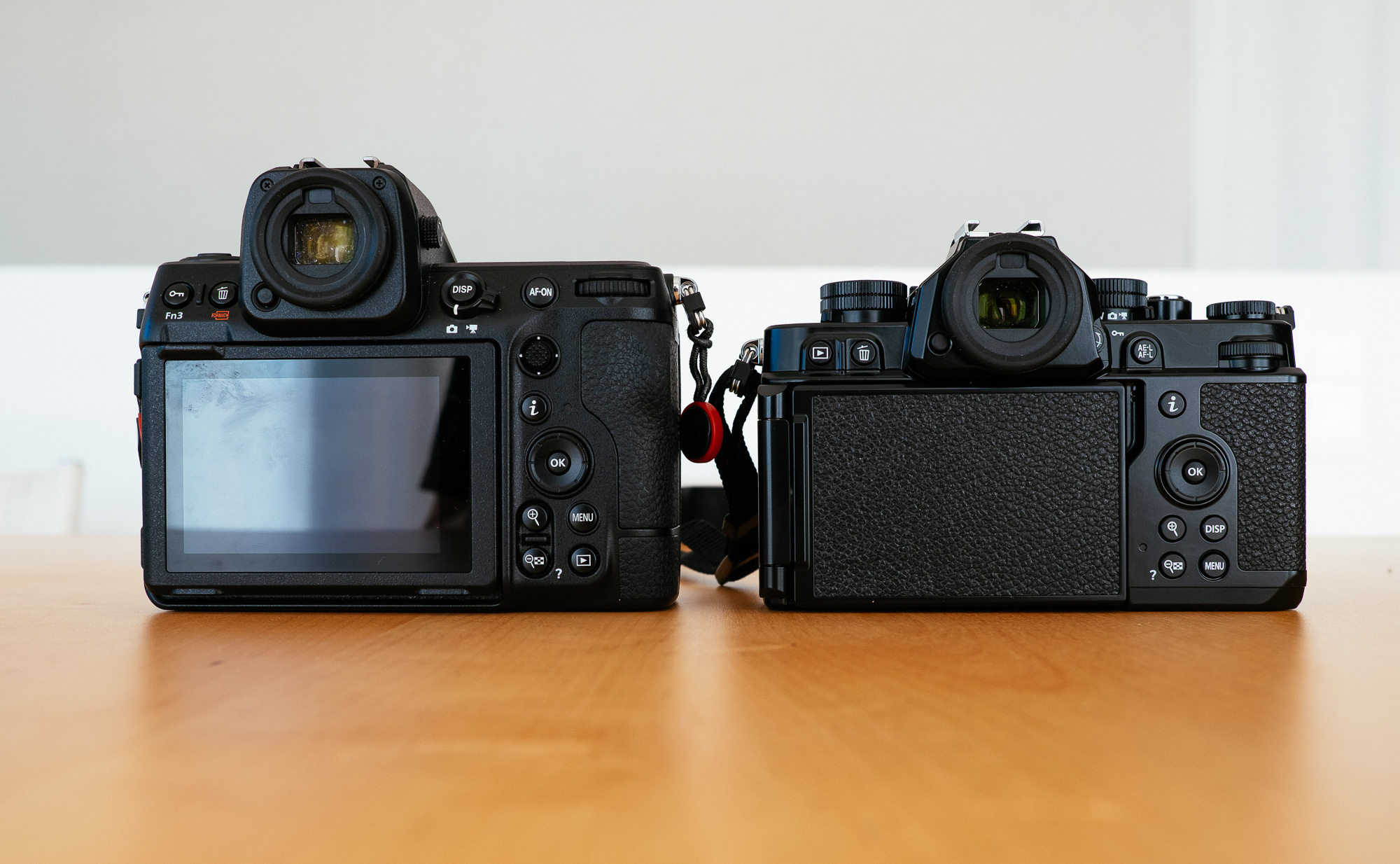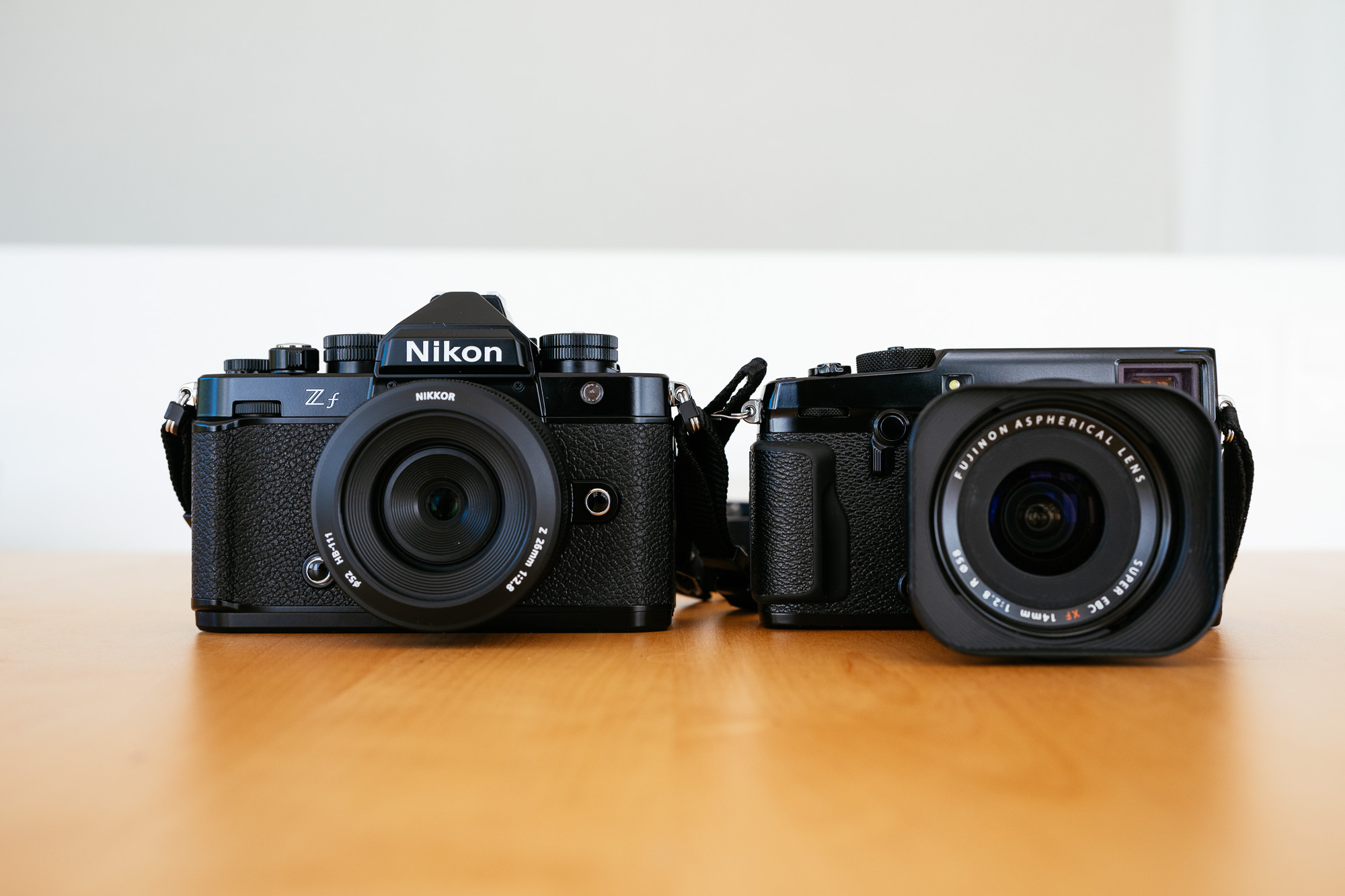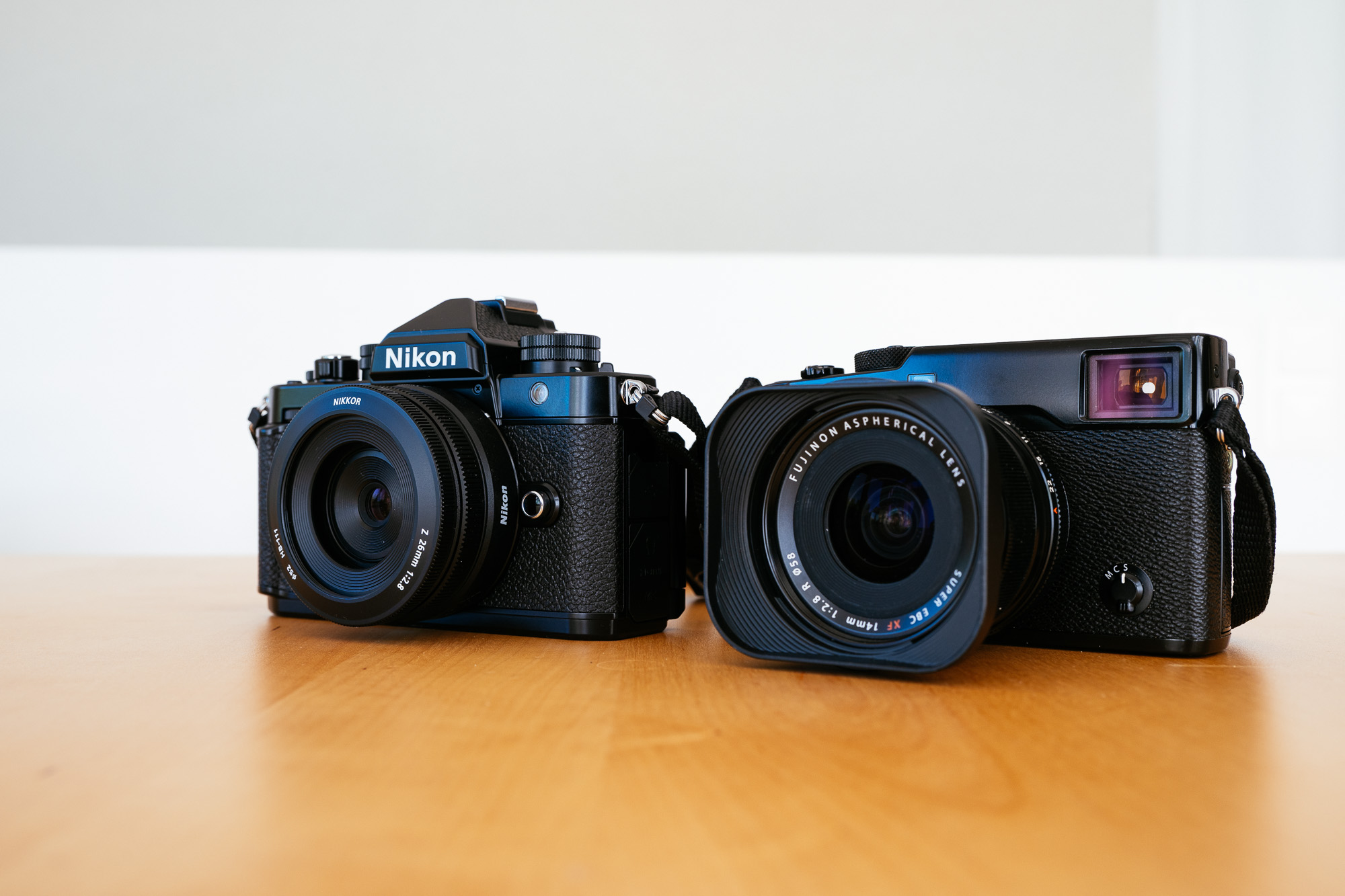 NIKON Z 8 (39mm, f/8, 1/30 sec, ISO250)
NIKON Z 8 (39mm, f/8, 1/30 sec, ISO250)
The Fuji X-Pro2 is my favourite camera of all time. How does the Nikon Zf compare?
In 2010 my photography changed. I got the Fuji X100 and despite its many shortcomings I just loved the shooting experience. I later got the X-Pro1 and took it on all my business trips to Asia. In 2016 I upgraded to the X-Pro2 and sold my full frame gear. For eight years the X-Pro2 was my main and partly only camera.
Last year I bought a Nikon Z8 and while I love its image quality, its AF and its overall speed I missed something. I was looking for a smaller camera with fast AF and good high ISO that I can take anywhere and finally ended up with a Nikon Zf. Not exactly small and light but smaller and lighter than the Z8 and very compact if I attach the Nikon Z 26/2.8. With this lens it’s only 100g heavier than my X-Pro2 with the XF 14/2.8 R. But because the Z 26/2.8 is a pancake design the Zf ends up to be the much slimmer camera almost similar to an oversized Fuji X100.
Seems like Nikon has giving us a full frame Fuji. Like the Fuji X-Pro2 the Nikon Zf is a so called retro camera with dials for shutter speed and ISO. So who makes the better old style camera?
 NIKON Z 8 (38mm, f/5.6, 1/60 sec, ISO400)
NIKON Z 8 (38mm, f/5.6, 1/60 sec, ISO400)
 NIKON Z 8 (45mm, f/5.6, 1/60 sec, ISO160)
NIKON Z 8 (45mm, f/5.6, 1/60 sec, ISO160)
Body ergonomics:
The X-Pro2 is a master class in simplicity and ergonomics. I think it is one of the best designed and one of the most beautiful cameras ever made. Like the Nikon ZF the Fuji X-Pro2 is also mostly square but it still offers a much better grip because of the slightly more pronounced grip with rubber insert in the front and a thumb rest with rubber insert on the back. It also helps that the camera is substantially lighter (481g vs 710g).
Both cameras are not really suitable for day long one hand shooting but I never do that. Luckily I have two hands and I use both when I take pictures. My left hand supports the lens and the right hand holds the camera. That way it doesn’t really matter how heavy or big the lens is but of course smaller and lighter lenses make more sense on either camera.
The EVF on the Nikon Zf is much bigger, the main dials click even “better” than the shutter dial on the Fuji and the shutter sound is also nicer. The X-Pro2 has a better, much bigger exposure composition dial, its shutter sound is quieter and it has a much better control pad and an AF – joystick.
To switch from aperture priority to manual exposure with Auto-ISO to full manual exposure is excellent on both cameras. It’s so much better compared to modern PSAM cameras. Yes the Zf has a hidden PSAM dial but it also has a big ISO and a big shutter speed dial. Both cameras are an absolute pleasure when it comes to full manual shooting.
Because of the better overall shape, the better controls and better grip the Fuji X-Pro2 has the better ergonomics. The small prime lenses with aperture rings are also a big advantage for Fuji.
Regarding ergonomics Fuji is the clear winner.
 NIKON Z 8 (45mm, f/5.6, 1/60 sec, ISO220)
NIKON Z 8 (45mm, f/5.6, 1/60 sec, ISO220)
I just realised that I haven’t mention the LCD screens. Both are fine. I’ve made my peace with the articulating LCD of the Zf. I just don’t use it and it is always in the closed position.
I thought I also add a picture which shows the Z8 next to the Zf to give some context. The Zf is not a small camera but it is clearly smaller than the Z8. I have large hands so I appreciate the size of the Zf and also of the Z8. Bigger lenses like the Z 24-120/4 S or the Z 14-24/4 S feel more at home on the Z8.
The Z8 operates very different to the Zf and the X-Pro2 and depending on your shooting style it can make a huge difference. If you love to store different user settings or banks for different shooting scenarios you will never be happy with the Nikon Zf or a Fuji X-Pro2. I don’t care about banks and only use them to quickly switch in-between different min shutter speeds in Auto-ISO so neither the Zf nor the X-Pro2 restrict me in any way.
 FUJIFILM X-Pro2 (23mm, f/5.6, 1/60 sec, ISO320)
FUJIFILM X-Pro2 (23mm, f/5.6, 1/60 sec, ISO320)
 FUJIFILM X-Pro2 (23mm, f/5.6, 1/50 sec, ISO250)
FUJIFILM X-Pro2 (23mm, f/5.6, 1/50 sec, ISO250)
 FUJIFILM X-Pro2 (23mm, f/5.6, 1/50 sec, ISO200)
FUJIFILM X-Pro2 (23mm, f/5.6, 1/50 sec, ISO200)
Sorry, I should have cleaned my LCD and viewfinder on the Z8 before I took those pictures. But it shows that I just use my gear. I rarely clean my cameras and I don’t pet them but I’m not trying to pose as a war reporter either. There is no reason to abuse my cameras. I want them to work and I want them to look good for many, many years.
Back to X-Pro2 vs Zf.
Image quality:
The image quality of the Fuji X-Pro2 is excellent. High-ISO performance and dynamic range of this sensor is so good that I sold my Canon 6D and my Sony A7R after I got the X-Pro2. Image quality was close enough to those cameras that I didn’t bother with the larger cameras anymore. Just like the Fuji X-Pro2 the Nikon Zf also has 24MP which I think is plenty enough. I much prefer 24MP on a full frame sensor to 40MP on an APS-C sized sensor.
Because of 24MP on a larger sensor high-ISO performance is even better than on the Fuji X-Pro2. And in addition the sensor is stabilised and offers a crazy 8 stop image stabilisation. I already took an image with the Z 26/2.8 at a shutter speed of 1 second! One second – imagine that! The Fuji X-Pro2 was already a very good low light camera but the Nikon Zf is even better.
A clear win for Nikon because of its better low light performance and IBIS.
AF:
I do not even know what to write here. Maybe I will start with that I never had any real complaints about the AF of my Fuji X-Pro2. AF was not super fast but reliable. I used to shoot AF-S and single AF point and used the joystick to move the AF point over my subject. There are hundreds of AF point covering almost the entire frame. Coming from Canon DSLRs this was a revelation.
But time moved on. The X-Pro2 has face detection but it only works in perfect conditions and with certain lenses. The original Nikon Z6 was miles ahead already and the Nikon Zf is on another level. AF is not as fast as on my Z8 but it is close and it works in very low light. Tracking works too which is the biggest shortcoming of Fuji. Like my Z8 the Zf offers Auto subject detect with eye detection which means that the camera recognises people, animals or vehicles. It does that all over the frame and is so sticky that I dedicated one custom button to engage 3D tracking with one single AF point in case I want the camera to focus on the building and not on the people in front of it.
So my AF setting is now AF-C and face detect just like on my Z8 and it works just brilliantly. You already guessed it: a clear win for Nikon.
 NIKON Z 8 (39mm, f/5.6, 1/60 sec, ISO250)
NIKON Z 8 (39mm, f/5.6, 1/60 sec, ISO250)
 NIKON Z 8 (42mm, f/8, 1/60 sec, ISO360)
NIKON Z 8 (42mm, f/8, 1/60 sec, ISO360)
Better image quality and better AF seems like the Fuji X-Pro2 has no chance against the Nikon Zf but it is not that simple. The Fuji X-Pro2 has the better ergonomics and the far better lens selection. I’m talking about small prime lenses here otherwise I have no complaints regarding Nikon Z lenses. Those small Fuji prime lenses are really brilliant and they all have aperture rings. Nikon needs to make more small lenses for the Zf and ideally lenses that feature clearly marked aperture rings. I’m sure that they would sell a lot of those.
The Fuji X-Pro2 is 9 years old already. The X-Pro3, that I also owned for some time, is almost 6 years old now. I think it is high time for a X-Pro4 and I hope that Fuji won’t mess up this camera. I don’t think it needs a 40MP sensor or a film style button. As much as I like the X-Pro bodies this would not be good enough for me to get one. What the X-Pro4 really needs is better AF and better low light performance. And just in case someone from Fuji reads this blog post here is my wish list:
- X-Pro2 body (yes, a fixed screen please and bring back the control pad)
- 26MP stacked sensor
- improved AF with subject detection, face/eye, …
- IBIS
- new, faster image processor
- new battery (it’s about time)
- shutter mechanism of the X-H1
- a wide pancake lens to keep it compact and light
Essentially I only want Fuji to close the gap or at least getting closer to the AF performance of the three leading camera makers. I hope they also get back to their roots and start to focus on smaller lenses again. The camera market is shrinking but I think there is always a market for a small but high performing camera system.
There is still time but when Nikon finally makes some nice lenses for the Zf or allow Sigma to offer their contemporary lenses for Nikon Z Fuji will be in a very difficult spot.

